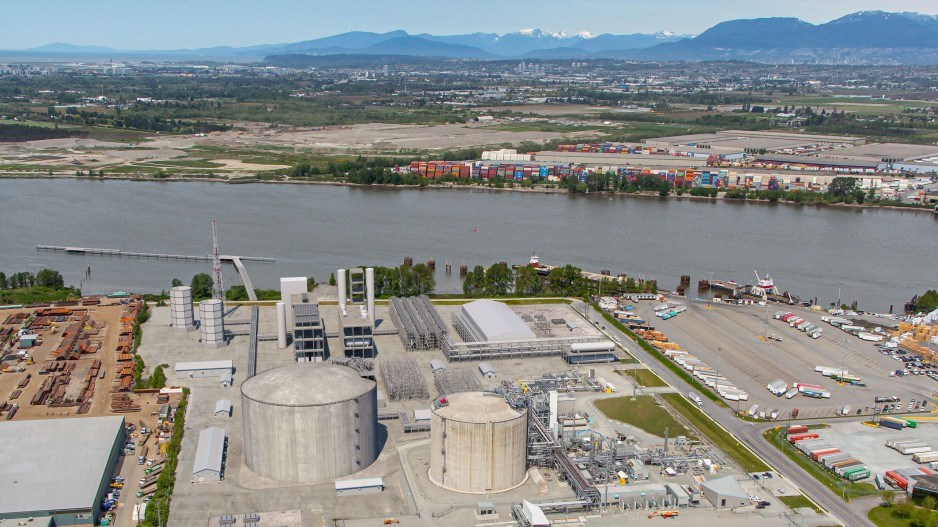FortisBC is still putting the finishing touches on a $400 million expansion of its Tilbury Island LNG plant, but is already pushing ahead with a second phase expansion.
When complete, the $3 billion expansion would mean the Tilbury Island plant would produce more LNG than the Woodfibre LNG plant in Squamish.
The second phase expansion proposal has just entered the BC Environmental Assessment Office’s review process with the filing of a project description – a process that FortisBC expects will take two years to complete.
It may also be subject to the federal government’s new Impact Assessment Act, which a number of business and industry groups have warned could be even more onerous, costly and lengthy than the Environmental Assessment Act that it replaced. B.C. has also made changes to its provincial Environmental Assessment Act. Both federal and provincial acts have increased the role of indigenous people in the environmental review process.
“The key thing for us is that we’re into the new environmental process, so that will be interesting to see how that plays out,” said Doug Stout, FortisBC’s vice president of marketing and external relations.
Meanwhile, FortisBC’s partner in the Tilbury marine jetty project – WesPac Midstream – is nearing the end of an environmental review for a new marine jetty it plans to build at Tilbury Island for a new marine bunkering facility.
FortisBC hopes to see the jetty’s approval sometime this summer, with a completion date of 2022. Should the phase two expansion be approved, it’s not expected to be complete until 2028.
If the expansion is approved, it might require an expansion of the Enbridge Inc. (TSX:ENB) natural gas pipeline system that supplies FortisBC with its natural gas.
“To finish out phase one, we think there’s capacity there on the system,” Stout said. “For phase two, we’d need some expanded gas transportation capacity through Enbridge.”
He said that expansion could be in the form of twinning some sections of the pipeline and additional compression.
FortisBC’s LNG plant at Tilbury Island historically was used to produce and store liquefied natural gas as a backup to meet peak demand and to address pipeline outages.
But FortisBC has also been capitalizing on the growing demand, both domestic and foreign, for LNG in transportation, both in trucking and shipping, by increasing the Tilbury Island plant's production capacity.
Domestically, a number of trucking fleets have already converted from diesel to compressed or liquefied natural gas. So have a number of ferries operated by Seaspan and BC Ferries.
Currently BC Ferries has five vessels operating on LNG and Seaspan has two, with two more LNG vessels on order, Stout said. FortisBC forecasts that the demand for LNG for marine bunkering could be 1 MTPA by 2030.
Private operators have also been developing small-scale LNG export opportunities. These exporters are using ISO containers, which can be put on container ships, and shipping them to China.
“There is a component that could be for export,” Stout said. “That could be either to ISO container market or bulk shipping.”
The first phase of the Tilbury Island LNG plant’s expansion isn’t technically done yet. FortisBC plans to bring the Tilbury Island plant’s production up from 0.25 million tonnes per annum to (MTPA) to 1 MTPA. This requires some additional liquefaction capacity and additional gas lines.
Should phase two be approved and sanctioned, it would bring the Tilbury Island plant’s capacity up to 3.5 MTPA. That is 1.4 MPTA more than the Woodfibre LNG plant would produce in Squamish.
The expansion plan includes increasing storage capacity. The need for more storage was underscored in 2018 when the Enbridge natural gas pipeline that supplies the Lower Mainland and Washington with natural gas state ruptured, resulting in shortages and rationing.




